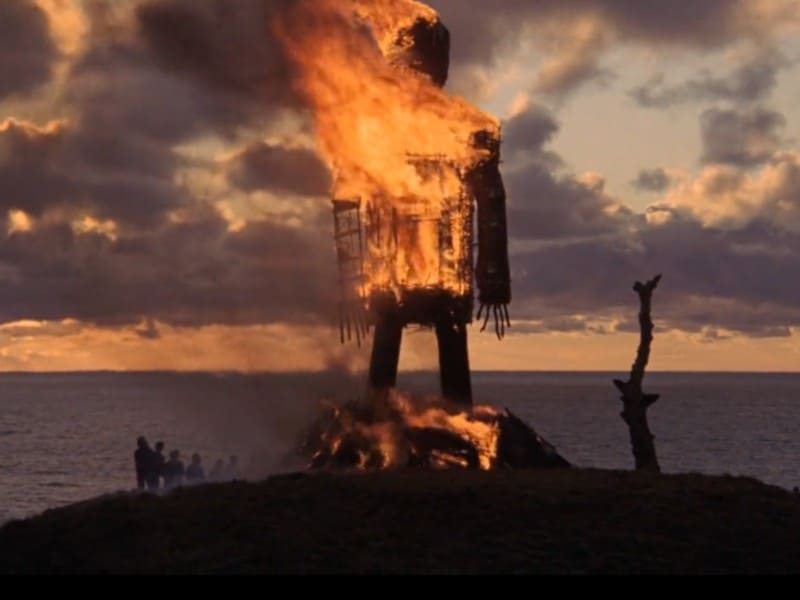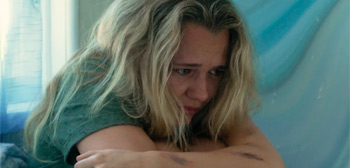10 Best British Horror Movies That Weren’t Produced by Hammer
October is defined in Webster’s Dictionary as “31 days of horror.” Don’t bother looking it up; it’s true. Most people take that to mean highlighting one horror movie a day, but here at FSR, we’ve taken that up a spooky notch or nine by celebrating each day with a top ten list. This article about the best non-Hammer British horror movies is part of our ongoing series 31 Days of Horror Lists.
Horror is ingrained in Britain’s cultural DNA. From the numerous haunted castles located across the country to Aleister Crowley’s wacky occult antics, the island has an interesting history with all things spooky and sinister. Don’t even get me started on Margaret Thatcher. Unsurprisingly, then, the United Kingdom has also produced some of the finest flicks to grace the realm of horror cinema. We’re going to take a look at ten of the very best.
Of course, you can’t discuss the legacy of British horror without mentioning Hammer. The reason why this list doesn’t include any of the iconic studio’s movies is that we covered our favorites during last year’s 31 Days of Horror extravaganza. This list is all about giving the other devils their due.
With this in mind, the Boo Crew — Chris Coffel, Valerie Ettenhofer, Kieran Fisher, Brad Gullickson, Rob Hunter, Meg Shields, Jacob Trussell, Anna Swanson, and yours truly — have selected some titles that will send shivers down your spine and make you say “blimey” out loud.
10. Don’t Look Now (1973)

In the grand tradition of “bummers that kick off with an unsupervised child dying,” Don’t Look Now is king. Based on a 1971 short story by Daphne du Maurier, Nicolas Roeg’s spiraling slow burn deserves every ounce of its cultish notoriety. The film takes place sometime in the aftermath of the death of Christine, the angelic daughter of Laura (Julie Christie) and John (Donald Sutherland). Partially to distract himself from his overwhelming grief, John accepts a commission to restore an old church and travels to Venice in the dead of winter. After encountering two weird sisters, one of whom claims to be psychic, John and Laura begin a descent into unease, suspicion, and a dangerous hope that maybe their daughter isn’t gone after all. Don’t Look Now weaponizes atmosphere to evoke curious connotations that something evil is lurking in the darkness, hiding in canals, and sprinting just out of sight. And by intermingling the significant with coincidence, reality begins to assume a terrifying shape. (Meg Shields)
9. Death Line (1972)

The horror genre became more politicized in the wake of George Romero’s Night of the Living Dead. As such, more films featured subtext about race, class divisions, and other turmoils that caused societal anxiety at the time. Death Line was one of the first British horror movies of the era to stand toe-to-toe with its American counterparts in that regard. The film follows a police detective (Donald Pleasance) who’s tasked with investigating a series of disappearances in the London Underground. Long story short: the railway system is home to cannibalistic dwellers. The story was inspired by a Scottish folktale about cannibal highwaymen and the numerous deaths that occurred in the London tube system through the years. This combination of influences allowed director Gary Sherman to create his own fascinating mythology about the horrors that lurk in the city’s lower levels. However, underneath the film’s horrific premise is a commentary about the British elite’s disregard of the working class. Death Line is an unsung classic that deserves more reappraisal. (Kieran Fisher)
8. Lair of the White Worm (1988)

Based on the novel by Bram Stoker and starring Peter Capaldi and Hugh Grant, Ken Russell’s Lair of the White Worm is a treat. Capaldi plays an archaeologist who teams up with the descendant of a dragonslayer and a lady who lives nearby to hunt down a snake-woman. While the movie functions as a basic monster yarn in many ways, Russell’s surreal sensibilities and odd sense of humor are on full display. The movie is loaded with phallic imagery and contains a couple of blasphemous moments that were undoubtedly included to provoke a rise out of people who were still mad at the director for making The Devils. At its core, however, it’s just an unabashedly goofy creature feature with a Gothic sheen. Lair of the White Worm is very much a Ken Russell movie, and it’s one of the most entertaining flicks in his impressive oeuvre. (Kieran Fisher)
7. The Wicker Man (1973)

As a young teen, staring at a wooden DVD box set of The Wicker Man, I was under the impression I was about to watch unyielding terror, the likes of which I had never witnessed. After watching all ninety minutes, it was fair to say I didn’t get it, but it was a style of film that I had never been exposed to at this point in my education. It’s methodical, the horror is subtle, the fear is from the ideas discussed rather than any ritual sacrifice we see, and it very obviously came out in the early ’70s. But I wasn’t ready for the way Wicker Man affects you. Similar to the insidiousness that Sergeant Howie (Edward Woodward) feels vibrate through Summerisle, we too are instilled with a deep sense of unease that sits with us well after the credits roll. My first watch maybe wasn’t the experience I was anticipating, but as the days went on, my mind kept coming back to the film and how it made me feel and think. The Wicker Man stays with you, engaging your imagination with quasi-cosmic terror to make you consider what nightmares exist in every quaint, secluded community. (Jacob Trussell)
6. Shaun of the Dead (2004)

The crown jewel of Edgar Wright’s Cornetto trilogy has exactly the right amount of everything; horror, comedy, buddy movie hijinks, and of course, British sensibilities. Shaun of the Dead is set in Crouch End, London, and makes great use of the area as pals Shaun (Simon Pegg) and Ed (Nick Frost) run through backyards and town streets with their freshly undead neighbors in pursuit. They eventually hide out at their favorite pub, the Winchester. Even when the film reaches what would normally be the inevitably dark climax of a zombie flick, you get the sense that nothing will stand in the way of these two lads enjoying a pint together. Shaun of the Dead is endless fun, and it’s also impressive as a decidedly local-feeling movie that’s found a cult following all over the world. (Valerie Ettenhofer)






